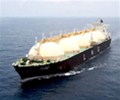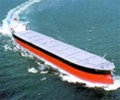Russian gas supplies to Europe slide further in August

Russian gas supplies to Europe dropped further in August — having already dipped sharply in July — as demand for Russian gas remained limited by the lack of storage injection capacity, an analysis of S&P Global Platts Analytics data showed Tuesday.
Pipeline flows to all of Europe (excluding the countries of the former Soviet Union) through the Nord Stream pipeline, the Yamal-Europe corridor and via Ukraine totaled 12.4 Bcm in August, or an average of 400 million cu m/d, according to the data.
That was down on the 12.61 Bcm that flowed out of Russia in July and came despite the 158 million cu m/d Nord Stream pipeline returning to full capacity after almost two weeks of maintenance in the second half of July.
Russian flows to Europe have been well down over the past few months on low demand caused by average summer temperatures and robust storage stocks.
It followed strong deliveries in May when total deliveries averaged almost 500 million cu m/d — a 14-month high — on the back of strong demand for storage injections in Central and Eastern Europe, and significant sales on Gazprom Export’s Electronic Sales Platform.
ESP sales for delivery in August were the highest monthly total to date at 1.96 Bcm, accounting for 16% of the total volume supplied to Europe — by far the highest proportion of total Gazprom supplies.
Customers with long-term contracts with Gazprom are likely to have nominated their imports down to minimum take-or-pay levels in August, with the ESP offering a cheaper alternative.
According to Platts Analytics, Russian flows remain below capacity, “highlighting the relative northwest European balance comfort amid soaring storage stocks”.
Russian flows to Europe in September will again likely be constrained by maintenance at the key Velke Kapusany entry point, reducing capacity to 118 million cu m/d for a large proportion of the month, Platts Analytics said Tuesday.
But volumes sold on the ESP for delivery in September already average 42 million cu m/d, which could help support Russian supplies through the month.
August flows
Flows via the Nord Stream pipeline to Germany returned to capacity in August, with 4.9 Bcm delivered via the route — for an average daily flow rate of 158 million cu m/d.
Gas flows through the Yamal-Europe corridor via Belarus into Poland in August fell further on the month, with volumes totaling 2.23 Bcm as flows were restricted via the Mallnow interconnection point.
Total flows via Ukraine — including those at interconnection points on the borders with Poland, Slovakia, Hungary and Romania — were 5.13 Bcm in August, down by 1.7 Bcm compared with July.
Flows via the main Velke Kapusany point on the border between Ukraine and Slovakia dropped to 3.34 Bcm last month, while net flows via the Beregdaroc interconnection point between Ukraine and Hungary also fell to 0.87 Bcm.
Russia also supplied 136 million cu m of gas to Finland via the Imatra interconnection point in July, according to data from European transmission system operators’ body Entsog.
All volumes are converted to the standard European measurement of 40 MJ/cubic meter at 15 C.
Gazprom also supplies gas via the Blue Stream pipeline directly to Turkey under the Black Sea, but no flow data was available.
Gazprom sales
Gazprom’s own sales data showed supplies to the Far Abroad (Europe plus Turkey, but not the countries of the former Soviet Union) in August totaled 15.8 Bcm (510 million cu m/d), according to S&P Global Platts estimates.
The volumes also include sales via Blue Stream to Turkey and sales from storage sites in Europe.
Gazprom said sales to several selected European countries in the first eight months of the year increased year on year, including to Hungary (+50.5%), Austria (+32.2%), the Czech Republic (+35.4%), Slovakia (+40.4%), the Netherlands (+12%) and France (+5.6%).
Russian long-term contract gas is facing strong competition from the hubs as European prices continue to come under pressure from strong pipeline supplies, robust stocks and steady LNG imports.
European hub prices are currently significantly cheaper than the bottom of the 85%-100% oil-indexed range having dropped out of the range in February.
TTF prices remain well below the bottom of the range until the end of 2020 when it moves above the bottom of the oil-indexed range given the impact of the falling oil price taking effect with the typical time lag of 6-9 months.
Source: Platts

 Hellenic Shipping News Worldwide Hellenic Shipping News Worldwide, Online Daily Newspaper on Hellenic and International Shipping
Hellenic Shipping News Worldwide Hellenic Shipping News Worldwide, Online Daily Newspaper on Hellenic and International Shipping





















 PG-Software
PG-Software